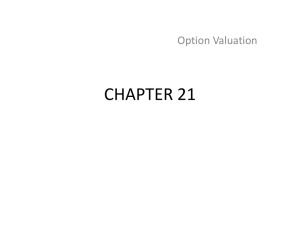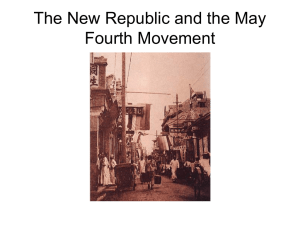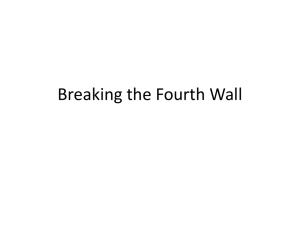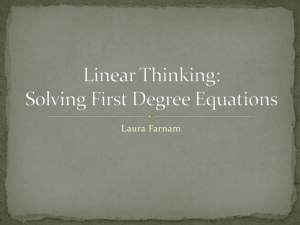1/2
advertisement
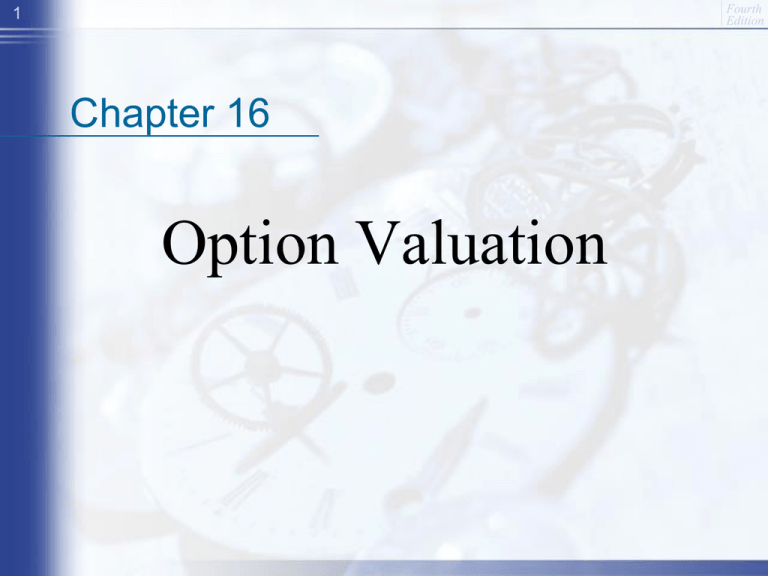
Fourth Edition 1 Chapter 16 Option Valuation Fourth Edition 2 Outline • Valuation – Intrinsic and time values – Factors determining option price – Black-Scholes Model • How valuation helps trading (optional) – Hedge ratio (Delta) and option elasticity – Other variables Fourth Edition 3 1. VALUATION Fourth Edition 4 Option Values • Intrinsic value - profit that could be made if the option was immediately exercised – Call: stock price - exercise price – Put: exercise price - stock price • However, option price is always higher than or equal to its intrinsic value • Time value - the difference between the option price and the intrinsic value Fourth Edition 5 Time Value of Options: Call Option value Value of Call Intrinsic Value Time value X Stock Price Fourth Edition 6 Factors Influencing Option Values: Calls If this variable increases Value of a call option Stock price increases Exercise price decreases Volatility of stock price increases Time to expiration increases Interest rate increases Dividend Rate decreases • Interest affects the PV(x), your obligation to pay in the future. Higher interest, the less you need to pay in today’s value, the higher the value of call • Div is a drag on stock price, call holder want stock price to be higher Fourth Edition 7 Factors Influencing Option Values: Puts If this variable increases Value of a Put option Stock price decreases Exercise price increases Volatility of stock price increases Time to expiration increases Interest rate decreases Dividend Rate Increases • Interest affects the PV(x), your sell price in the future. Higher interest, the less you get paid in today’s value, the lower the value of put • Div is a drag on stock price, put holder want stock price be low Fourth Edition 8 Black-Scholes Option Valuation Co = SoN(d1) - Xe-rTN(d2) d1 = [ln(So/X) + (r – d + s2/2)T] / (s T1/2) d2 = d1 - (s T1/2) where Co = Current call option value. So = Current stock price N(d) = probability that a random draw from a normal dist. will be less than 1. Fourth Edition 9 Black-Scholes Option Valuation X = Exercise price. d = Annual dividend yield of underlying stock e = 2.71828, the base of the nat. log. r = Risk-free interest rate (annualizes continuously compounded with the same maturity as the option. T = time to maturity of the option in years. ln = Natural log function s = Standard deviation of annualized cont. compounded rate of return on the stock Fourth Edition 10 Call Option Example So = 100 X = 95 r = .10 T = .25 (quarter) s = .50 d = 0 d1 = [ln(100/95)+(.10-0+(.5 2/2))]/(.5 .251/2) = .43 d2 = .43 - ((.5)( .251/2) = .18 Fourth Edition 11 Probabilities from Normal Dist. N (.43) = .6664 Table 17.2 d N(d) .42 .6628 .43 .6664 .44 .6700 Fourth Edition 12 Probabilities from Normal Dist. N (.18) = .5714 Table 17.2 d N(d) .16 .5636 .18 .5714 .20 .5793 Fourth Edition 13 Call Option Value Co = Soe-dTN(d1) - Xe-rTN(d2) Co = 100 X .6664 - 95 e- .10 X .25 X .5714 Co = 13.70 Fourth Edition 14 Put Option Value: Black-Scholes P=Xe-rT [1-N(d2)] – S0 [1-N(d1)] Using the sample data P = $95e(-.10X.25)(1-.5714) - $100 (1-.6664) P = $6.35 Fourth Edition 15 2.HOW VALUATION HELPS TRADING Fourth Edition 16 Hedge ratio • Hedge ratio: The change in the price of an option for a $1 increase in stock price. Hedge ratio is also called delta • If we graph option value as a function of stock price, hedge ratio is the slope • For call, 0<delta<1, for put -1<delta<0 • In Black-Schole model, hedge ratio for call is N(d1), for put is N(d1)-1 Fourth Edition 17 How to use hedge ratio in trading • Hedge ratio (delta) help to understand your potential gain and loss for options positions • Leverage – Option elasticity: (%change of option price)/(% change of stock price) – Option elasticity=(delta/option price)/(1/stock price) – Elasticity measures your leverage (with options) vs. investing in stocks • My own measurement: delta/option price – Measures % change of option value for $1 change of stock price Fourth Edition 18 Important measurements in trading • Delta: the change in an option price for one dollar increase in stock price • Gamma: the change of Delta for one $ increase in stock price • Theta: the change in an option price given a one-day change in time. Always negative, Good for option sellers. Fourth Edition 19 Important measurements in trading • Rho: the change in an option price for one % change in risk free rate ( not a big concern in trading. 1% rate is huge change, compared with $1 change of underlying stock price) Fourth Edition 20 Important measurements in trading • Vega: sensitivity to volatility. The change in an option price for 1%change in implied volatility – Vega declines overtime – Example: • June 2010 S&P index Put, exercise price: 800 • Index now: 1015; option Price/premium: $33 Vega: 2.3;implied volatility 35% • If implied volatility increase by 10% from 35% to 45%. (CBOE Volatility Index soars as Wall St slumps) • Put price: 2.3*10+33=$56 Fourth Edition 21 Important measurements in trading • Calculate option price change Stock Option Now(Time 0) AAPL Option implied volatility0(%) Delta Vega AAPL 2012 Jan $200 Put 5/7/10 $ 235.86 $ 34.55 46 -0.2732 1.0232 Next trading day(Time 1) Stock price stock price change Option price change due to stock price 5/10/2010 200 Implied volatility1 volatility change Option Price change due to increased volatility Total Option Price change Option Price 1 Gain per put contract wirte $ 60 - 0 Fourth Edition 22 Important measurements in trading Variables Exercise Price Stock Price Time to Maturity Volatility Risk Free Rate Dividend Yield Relationship with Call Option Value + + Relationship with put Option Value + + Sensitivity variables Importance in Trading Delta, Gamma Theta Very Very + + - + + Vega Rho Very
